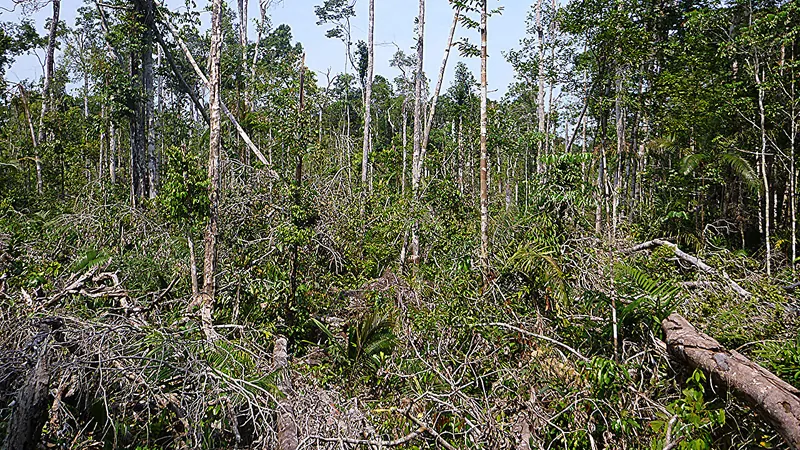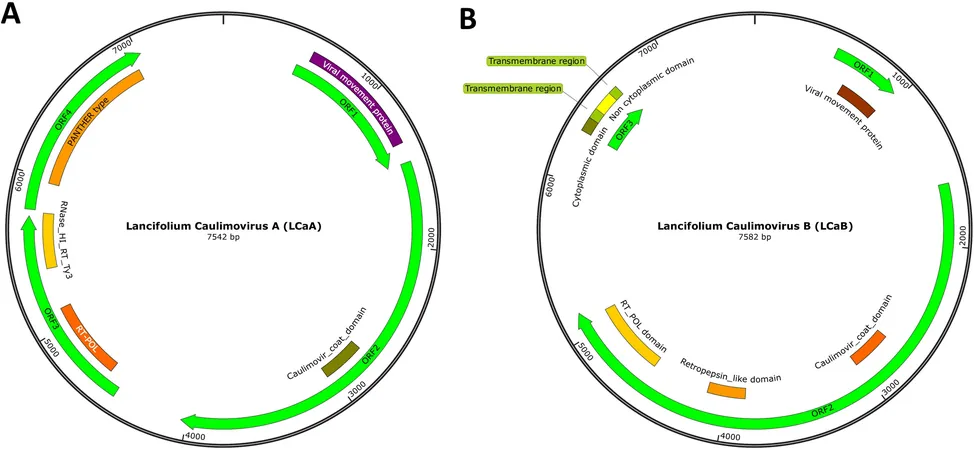
Increasing Storm Intensity is Causing Catastrophic Windthrow Events in the Amazon Rainforest
2024-11-11
Author: John Tan
Introduction
In a concerning trend linked to climate change, the Amazon rainforest is experiencing an alarming rise in windthrow events—where powerful downdrafts from storms uproot or break trees. This phenomenon has the potential to drastically alter the structure and composition of these vital ecosystems.
Research Overview
Research published in AGU Advances by J. David Urquiza-Muñoz and his team leverages satellite data from Landsat, allowing for a comprehensive analysis of significant windthrow events—defined as those affecting more than 30 hectares (74 acres)—from 1985 to 2020. Their findings reveal a staggering nearly fourfold increase in windthrows over these decades, escalating from just 78 events impacting 6,900 hectares (17,050 acres) in 1985 to 264 events affecting a substantial 32,170 hectares (79,494 acres) by 2020. The most heavily impacted regions are primarily located in the central and western areas of the Amazon.
Methodology
The researchers utilized a series of satellite images, carefully excluding those obscured by cloud cover, to track the environmental changes year by year. By comparing images, they successfully identified the spectral signatures of downed or uprooted trees and recorded a total of 3,179 large windthrow events during their study period. Notably, the largest single windthrow event occurred over an area exceeding 2,543 hectares (6,284 acres).
Key Findings
Interestingly, the study highlighted that a mere 3% of the area surveyed accounted for 35% of the windthrows, pointing to certain hotspots of windthrow activity within the Amazon. While the prevalence of these events is on the rise, the data did not show a consistent pattern in the sizes of individual windthrows throughout the years.
Significance of Research
The significance of this research cannot be overstated. It provides crucial evidence that supports the notion of increasing storm intensity in the Amazon, a region crucial for global biodiversity and climate regulation. However, the variability in windthrow occurrences from year to year remains unexplained, indicating a complex interplay of factors warranting further investigation.
Future Directions
Looking ahead, the researchers suggest that advancements in satellite imagery resolution could enable the detection of smaller windthrows, which could offer deeper insights into forest dynamics. Additionally, the application of lidar technology may enhance understanding of the broader effects of windthrows beyond the immediate damage zones, underscoring the potential for future studies to unravel the multifaceted impacts of these extreme weather events.
Conclusion
As the Amazon continues to face escalating climate challenges, understanding windthrow events will be essential for conservation efforts aimed at protecting this irreplaceable ecosystem. There may still be time to mitigate damage, but urgent action is required as the stakes have never been higher for one of the world's most vital forests.





 Brasil (PT)
Brasil (PT)
 Canada (EN)
Canada (EN)
 Chile (ES)
Chile (ES)
 Česko (CS)
Česko (CS)
 대한민국 (KO)
대한민국 (KO)
 España (ES)
España (ES)
 France (FR)
France (FR)
 Hong Kong (EN)
Hong Kong (EN)
 Italia (IT)
Italia (IT)
 日本 (JA)
日本 (JA)
 Magyarország (HU)
Magyarország (HU)
 Norge (NO)
Norge (NO)
 Polska (PL)
Polska (PL)
 Schweiz (DE)
Schweiz (DE)
 Singapore (EN)
Singapore (EN)
 Sverige (SV)
Sverige (SV)
 Suomi (FI)
Suomi (FI)
 Türkiye (TR)
Türkiye (TR)
 الإمارات العربية المتحدة (AR)
الإمارات العربية المتحدة (AR)